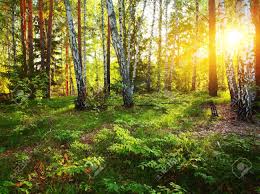Earth, Our Original Monastery
By Christine Valters Paintner
Posted on
Of the many rich and fruitful paths available as part of the Christian tradition, the monastic way calls to me the strongest. The invitation to live life with more slowness, simplicity, and attentiveness are rich gifts in a world driven by speed, consumerism, and distraction. Contemplative practices help to offer an antidote to ways of living that have contributed to the destruction of the earth.
Monastic tradition also has its roots in a call to be in intimate connection with nature. The monk’s path was birthed in the forests and deserts, the places of wilderness and other wild edges which reflect an inner reality as well. This call to the edges, which is the monk’s call, is a call to wildness, to that which lies beyond our domesticated, neat, safe, and secure lives. Nature reminds us of the messiness and beauty of things. Nature says that when we let ourselves get messy and play in the dirt, profound things can happen.

Our work as spiritual seekers and contemplatives is to see all of creation as woven together in holiness, to live as if this were true. In this loving act we begin to knit together that which has been torn, we gather all that has been scattered. Contemplative practice is a way to bring healing presence to the world.
The central image I offer in this book is to consider Earth as our original monastery. Earth is the place where we learn our most fundamental prayers, hear the call of the wild arising at dawn to awaken us to a new day, participate in the primal liturgy of praise unfolding all around us, and experience the wisdom and guidance of the seasons.
When I long to go on retreat, it is most often the sea or the forest which call to me. When I lead others on retreat and ask participants where they most often experience a sense of sanctuary and renewal, the majority of responses are places in nature.
Everything in creation becomes a catalyst for my deepened self-understanding. The forest asks me to embrace my truth once again. The hummingbird invites me to sip holy nectar, the egret to stretch out my wings, the sparrows to remember my flock.
Each pine cone contains an epiphany; each smooth stone offers a revelation. I watch and witness as the sun slowly makes her long arc across the sky and discover my own rising and falling. The moon will sing of quiet miracles, like those which reveal and conceal the world every day right before our eyes.
I crave a wide sea of wordless moments, to express myself in another language, one more ancient and primal. I want to become a disciple of silence and hear in that shimmering soundlessness the voice of the one who whispers in stillness, whose singing vibrates in stones, who out of the silence calls forth a radical commitment of which I do not yet know the shape.
This excerpt from Earth, Our Original Monastery: Cultivating Wonder and Gratitude through Intimacy with Nature is reprinted with permission of the publisher, Ave Maria Press, as well as the author. The new book will be in bookstores in April 2020. Christine, a friend of Mercy by the Sea, is the author of 13 books on monasticism and creativity. She is the online abbess for Abbey of the Arts, a virtual monastery offering classes and resources on contemplative practice and creative expression abbeyofthearts.com. Last fall, Christine led the popular Mercy by the Sea day retreat, The Soul’s Slow Ripening: Celtic Practices for Seeking the Sacred.” She is living out her commitment as a Benedictine Oblate in Galway, Ireland.
